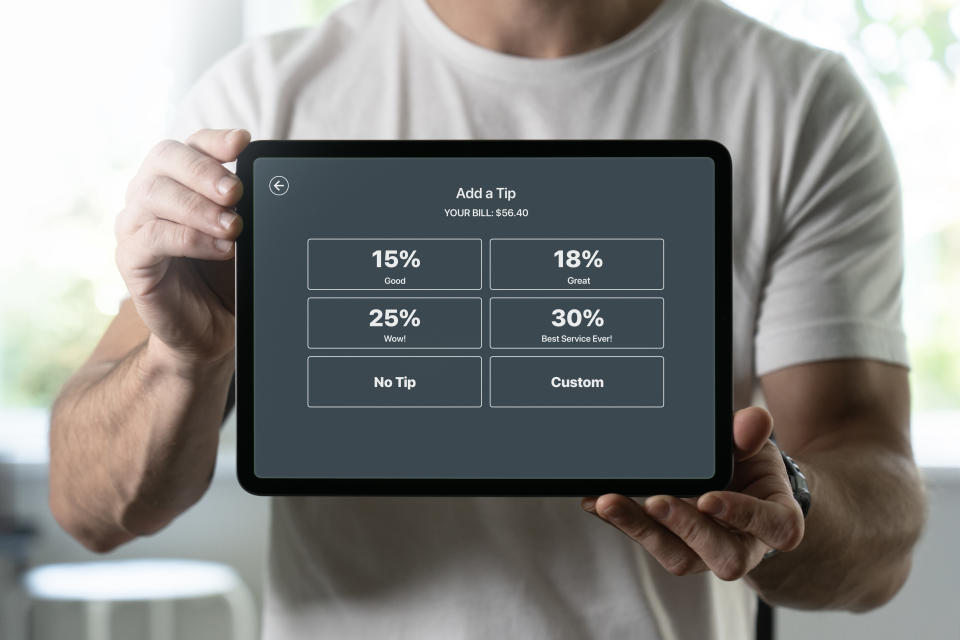In today’s fast-paced world, businesses are continually seeking innovative ways to enhance customer interactions and streamline payment processes. One such innovation that has gained popularity across various industries is the tipping screen. This technology not only facilitates payments but also creates a more engaging experience for customers. In this article, we will delve into what tipping screens are, their benefits, and their impact on businesses and consumers alike.
What is a Tipping Screen?

A tipping screen is a digital interface integrated into point-of-sale (POS) systems, allowing customers to add a tip during the payment process. Typically displayed after the transaction amount, the tipping screen presents suggested tip percentages or custom amounts, encouraging customers to reward service workers for exceptional service. These screens can be found in various settings, from restaurants and cafes to rideshare services and delivery apps.
How Tipping Screens Work
When a customer completes a purchase, the tipping screen appears, displaying options for tipping—often in percentages like 15%, 20%, and 25%, as well as a field for custom amounts. After the customer selects their desired tip, the total amount is calculated, and the customer can proceed with the payment, usually via credit or debit card.
This seamless integration not only simplifies the tipping process but also makes it more transparent, as customers can easily see how their tip contributes to the overall transaction.
Benefits of Tipping Screens
Enhancing Customer Experience
One of the primary benefits of tipping screens is the enhanced customer experience they offer. By providing suggested tip amounts, businesses eliminate the awkwardness that can sometimes accompany tipping. Customers can quickly choose a tip without having to calculate percentages on the fly, making the payment process smoother and more enjoyable.

Increased Tips for Service Staff
Research has shown that the presence of tipping screens can significantly increase the amount of tips received by service staff. When presented with suggested amounts, customers are more likely to tip at higher percentages compared to when tipping is left to their discretion. This increase in tips can greatly benefit employees, particularly in service-oriented industries where gratuities constitute a substantial portion of their income.
Improved Operational Efficiency
For businesses, tipping screens streamline the payment process and reduce the time spent on transactions. This efficiency can be particularly advantageous during peak hours when fast service is essential. By integrating tipping screens into their POS systems, businesses can speed up the checkout process, allowing staff to focus more on customer service rather than payment logistics.
Data Insights and Analytics
Tipping screens also provide valuable data insights for businesses. By tracking tipping patterns, establishments can analyze which services are most appreciated by customers, identify peak tipping times, and evaluate overall customer satisfaction. This data can inform training, staffing, and service improvements, ultimately leading to better business outcomes.
The Impact of Tipping Screens on Different Industries

Restaurants and Cafes
In the restaurant industry, tipping screen have become nearly ubiquitous. They allow patrons to quickly and easily tip their servers, enhancing the dining experience. Many establishments have reported an increase in average tips since implementing tipping screens, which can directly impact employee morale and retention.
Rideshare and Delivery Services
For rideshare drivers and delivery personnel, tipping screens have transformed how tips are received. After a ride or delivery is completed, customers are prompted to tip, often leading to increased gratuities. This has been particularly beneficial in an industry where drivers depend heavily on tips for their income.
Hospitality and Hotels
Hotels are also utilizing tipping screens in various capacities, from concierge services to room service. By making it easy for guests to tip staff who provide exceptional service, hotels can enhance the overall guest experience and encourage a culture of service excellence.
Challenges and Considerations

Customer Resistance
Despite the benefits, some customers may feel uncomfortable with tipping screens. There can be a perception that they pressure customers into tipping more than they intended. Businesses should strive to present tipping options in a way that feels optional rather than obligatory, perhaps by including a “no tip” option clearly on the screen.
Technological Limitations
While many businesses have embraced tipping screens, not all POS systems are equipped to handle this feature. Smaller establishments or those with outdated systems may face challenges in implementing this technology, which can create disparities in service quality between different businesses.
Privacy Concerns
As tipping screens often collect data on customer tipping habits, privacy concerns can arise. Businesses must ensure they comply with data protection regulations and be transparent about how customer data is collected and used. Clear communication can help mitigate concerns and build trust with customers.
Future Trends in Tipping Screens
Customization and Personalization
As technology advances, we can expect tipping screens to become even more customized and personalized. For example, businesses may implement systems that remember previous tipping habits, allowing for a more tailored experience. This personalization can enhance customer loyalty and encourage repeat visits.
Integration with Loyalty Programs
Future tipping screens may also be integrated with loyalty programs, enabling customers to earn points or rewards based on their tipping behavior. This integration could encourage tipping while simultaneously promoting customer retention and engagement.
AI and Machine Learning
The use of artificial intelligence (AI) and machine learning can help businesses analyze tipping patterns more effectively. By understanding customer behavior, businesses can adjust their service offerings, improve staff training, and enhance overall customer satisfaction.
Conclusion
Tipping screens are revolutionizing the way customers interact with businesses, particularly in service-oriented industries. By streamlining the tipping process, enhancing customer experiences, and providing valuable data insights, tipping screens offer significant benefits for both consumers and businesses. As technology continues to evolve, we can expect to see even more innovations in this space, making tipping a more integrated and enjoyable part of the customer experience. Whether in a restaurant, on a rideshare, or in a hotel, tipping screens are here to stay, reshaping how we reward service in the modern economy.



